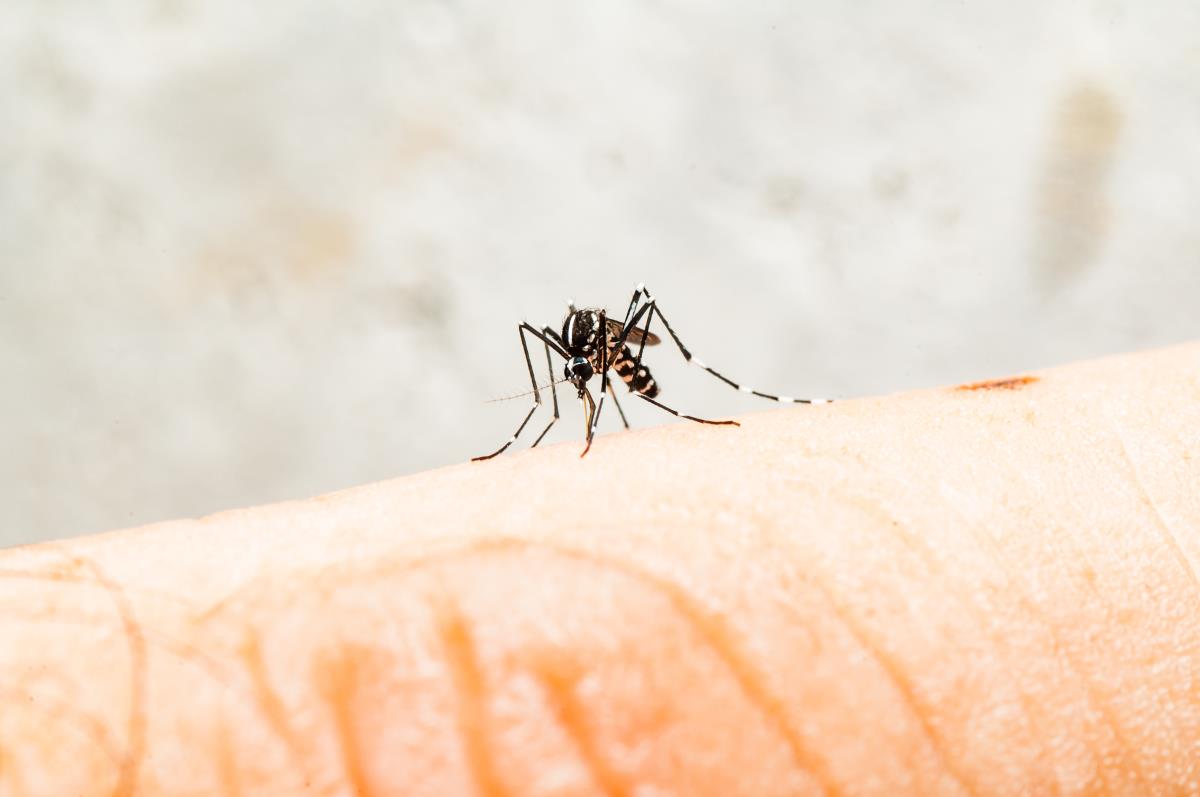
In the U.S., around 2,000 cases of malaria are diagnosed every year, according to the Centers for Disease Control and Prevention (CDC). Malaria parasites multiply rapidly in the livers and red blood cells of infected individuals. In the case of P. falciparum infection, infected red blood cells do not circulate freely in the blood but stick to the walls of blood vessels. When this occurs in the brain, it can lead to blockage in the small blood vessels, causing a severe neurological complication known as cerebral malaria. This type of malaria is associated with high mortality.
Another parasite that uses an insect as a vehicle and is endemic to sub-Saharan Africa is Trypanosoma brucei. This pathogen is transmitted by tsetse flies (Glossina species) and causes a potentially deadly disease known as the African sleeping sickness (trypanosomiasis). Once bitten by an infected fly, a painful red sore (chancre) develops on the site of infection and is followed within one to three weeks by other symptoms, such as fever, severe headaches, extreme fatigue, swollen lymph nodes and aching muscles and joints. If left untreated, the infection can spread to the central nervous system, where it can cause progressive confusion, personality changes and other neurological problems that could eventually result in death.
Today, several drugs are used for the treatment of both malaria and African trypanosomiasis. However, many adverse effects are associated with their use. For instance, antimalarial drugs are said to cause nausea, abdominal pain, insomnia, depression, severe dizziness and hallucinations, while treatments for African trypanosomiasis are associated with certain levels of toxicity, as well as impaired kidney and liver functions. Fortunately, some anti-parasitic agents derived from medicinal plants have shown potent activities against malarial and trypanosomatid parasites. (Related: Researchers confirm the antiplasmodial effects of bellyache bush on malaria-infected mice.)
Compound from South American plant shows promise as antimalarial and anti-trypanosomal agent
In a recent study published in the journal Chemical Biology & Drug Design, researchers from Argentina and Belgium evaluated the anti-parasitic properties of the derivatives of a compound isolated from Nardophyllum bryoides. This Patagonian shrub is native to South America and belongs to the sunflower family. Secochiliolide acid (SA), a diterpene present in N. bryoides, has served as a precursor for many compounds that have shown remarkable anti-parasitic activities in many in vitro studies.
To determine if these compounds are effective against P. falciparum and T. brucei, the researchers synthesized a series of new esters from SA and evaluated their cytotoxic effects on the two parasites, as well as on normal mammalian cells. The researchers found that the SA esters displayed moderate anti-trypanosomal activity, with half-maximal inhibitory concentration (IC50) values ranging between 2.55 and 18.14 microMolar. However, they showed poor antiplasmodial effects, with IC50 values greater than 29 microMolar.
The only exception to this was the n?hexyl ester of SA, which showed strong and selective antiplasmodial activity (IC50 = 1.99 microMolar). Using the 4-day suppressive test of Peters in mice, the researchers assessed the antimalarial efficacy of the n?hexyl ester of SA in vivo. Intraperitoneal treatment with the compound reduced the amount of parasites in the animals' blood by 56 percent, which was statistically significant four days post-infection. The compound also improved the mice's survival.
Based on these findings, the researchers concluded that the n-hexyl ester of SA from N. bryoides can be used as a potent natural antimalarial agent to treat malaria and African sleeping sickness.
Sources include:
Please contact us for more information.























